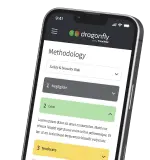In this episode of the Tech Toolkit Podcast, hosted by Andrew Ward from Scorchsoft, we delve into the indispensable role of customer feedback in elevating tech projects. We explore actionable strategies and insights for effectively integrating customer feedback into business processes, ensuring products meet and exceed customer expectations.
Key Topics Covered:
-
The Importance of Customer Feedback: We emphasize customer feedback as a critical component, not an afterthought, in the development and success of tech projects. It serves as a compass, guiding projects towards market relevance and customer satisfaction.
-
Effective Feedback Gathering: Discuss various tools and methods such as surveys, interviews, and analytics platforms like HotJar, FullStory, and Smartlook. These tools help in understanding user behaviour and collecting valuable insights.
-
Customer Segmentation: Highlighting the significance of recognizing that users interact with apps differently. Tools like Firebase and Segment.io assist in collecting and analyzing user data, enabling personalized feedback mechanisms.
-
Personalizing Feedback Mechanisms: Tailoring feedback collection to user segments ensures relevance and actionability. We also touch on the power of open-ended questions in surveys to gain deep insights.
-
Implementing Feedback: Stressing the importance of using feedback to inform decisions on feature enhancements, User interface and User experience changes, or bug fixes. A/B testing and project management tools like Trello and Asana help prioritize and track feedback implementation.
-
Utilizing an Impact-Effort Matrix: A strategic tool that categorizes potential actions based on their impact and the effort required, guiding priorities and identifying quick wins.
-
Fostering a Feedback-Centric Culture: Encouraging regular customer interactions across all team levels and integrating customer insights into every decision-making process.
This episode underscores the transformative power of customer feedback in tech project development, offering listeners a comprehensive guide to collecting, analyzing, and implementing feedback. Businesses can achieve commercial success and stand out in a competitive market by focusing on customer needs and preferences.
At Scorchsoft, we are dedicated to helping businesses develop tech solutions that deeply resonate with their market. For support on your next project, contact us and let's make your tech aspirations a reality. Stay tuned for more insightful episodes on leveraging technology for business growth with the Tech Toolkit Podcast.
Full Podcast Transcript
Elevate your tech project from good to great with one key ingredient: customer feedback. Learn how to harness its power to achieve business results!
Welcome to the Tech Toolkit Podcast by Scorchsoft, your gateway to using technology to achieve business success. I'm Andrew Ward, and in this episode, we're covering the essential role of customer feedback in the lifecycle of tech projects, offering you actionable strategies and insights to integrate this goldmine into your business processes.
Imagine launching a new app or service with confidence, only to face unexpected hurdles post-launch. Perhaps you don’t get the user adoption expected, or maybe customers are frustrated leaving one-star reviews.
Herein lies the pivotal question: Did we miss aligning our project with what our customers truly need? This scenario underscores the critical importance of customer feedback—not as an afterthought but as the cornerstone of your project’s development and success.
Custmer feedback is the compass that guides your project towards market relevance and customer satisfaction. It transforms assumptions into data-driven strategies, ensuring your product not only meets but exceeds customer expectations. This alignment with customer needs significantly enhances your chances of commercial success.
The first step towards leveraging customer feedback is effective gathering, and opportunities to collect customer feedback are everywhere, and there are lots of tools which can help you along the way.
Surveysand interviews are powerful tools for this purpose. Platforms like Google Forms and SurveyMonkey offer accessible means to craft concise, engaging surveys that encourage completion. Additionally, face-to-face interviews or focus groups yield in-depth insights, revealing the nuances of customer experiences and expectations.
Numerous tools are available to integrate with your app, enabling you to collect feedback and user session data. This information is invaluable for making incremental improvements to your services. By leveraging these tools, you can gain insights into user behaviour and preferences, helping you refine your app progressively.
For web and mobile app projects, there are several tools that stand out for their ability to enhance user experience, gather feedback, and provide deep insights into user interactions.
Hot Jar is a go-to for understanding web user behavior with its heatmaps and session recordings.
FullStory offers similar functionalities with an added emphasis on analytics. Mixpanel shines in user analytics, helping track engagement and user behavior trends. Crazy Egg provides heatmaps and click reports, offering a visual representation of user interactions.
For example for React Native projects, tools like BugSnag and Sentry are invaluable for real-time error tracking, improving app stability significantly. Reactotron, UserTesting and Optimizely are all examples of tools which help you to conduct A/B testing, letting you experiment with different versions of your web pages or apps to identify which performs best.
Lastly, Smartlook stands out as a particular favourite, especially for React Native projects, by offering qualitative analytics tools like session recordings and event tracking, which are crucial for understanding user behavior in-depth.
These tools collectively provide a comprehensive suite of functionalities to enhance, monitor, and optimize user experience and engagement in web and app projects.
But remember, everyone is different, and if you treat all users the same way then you may think something is going to work due to what one customer says, when another feels the complete opposite! Here is where Customer Segmentation is important.
Customer segmentation is not just about dividing your users into groups. It's about understanding that each segment interacts with your app differently. New users might struggle with navigation, while long-term users could be seeking more advanced features. By recognizing these differences, you can tailor your feedback mechanisms and make meaningful improvements.
So, how do you effectively segment your users? It's a mix of art and science. Consider demographics like age and location, but don't stop there. Delve into behavioral patterns: How often do users engage with your app? Which features are they using the most? Are they new users, active enthusiasts, or at risk of churning? Tools like Firebase for mobile apps or Segment.io can be incredibly useful here, helping you collect and analyze this vital data.
Once you've segmented your users, it's time to personalize your feedback mechanisms. Tailor your in-app surveys or feedback requests to each segment.
For instance, if you've just rolled out a new feature, target the users who are actively engaging with it for feedback. This approach ensures that the feedback you receive is relevant and actionable.
But here's the key: Use this feedback for targeted improvements. Analyze the insights from each segment to inform decisions on feature enhancements, user interface or user experience changes, or bug fixes. And remember, A/B testing is your friend. Before rolling out changes broadly, test them with a segment to see how they respond.
If conducting a survey, the questions you ask users can make or break your feedback gathering efforts. Open-ended questions foster detailed responses, offering a window into the customer's mind. Questions should invite customers to share their experiences, challenges, and suggestions freely. This open dialogue approach can uncover invaluable insights that closed-ended questions might miss.
Once you have collected this feedback, don’t forget to apply what you learn to what you do next; The value of customer feedback lies in its implementation! Use project management tools like Trello, Jira or Asana to prioritize and track the progress of feedback implementation. Addressing feedback promptly shows customers their opinions are valued and can significantly enhance customer loyalty and satisfaction.
When you're inundated with feedback and unsure where to focus your efforts, utilizing an impact-effort matrix can be highly effective. This tool, which we discussed in a previous cast, helps you categorize potential actions based on their impact and the effort required to implement them.
It's a strategic way to guide your priorities, enabling you to identify quick wins (high impact, low effort), major projects (high impact, high effort), fill-ins (low impact, low effort), and tasks you should perhaps avoid (low impact, high effort).
This approach ensures that you're not only addressing feedback efficiently but also making informed decisions that can have the most significant positive impact on your product or service.
Embedding a culture that values customer feedback within your organization is also very important.
Fostering a culture that deeply values customer feedback is a multifaceted process that transforms the way your organization operates. It begins with encouraging regular interactions with customers across all levels of the team. This direct engagement ensures that every department understands the customer’s perspective and experiences firsthand. It's not just about collecting feedback; it's about embedding it into the DNA of your organization. This means integrating customer insights into every decision-making process, from product development to marketing strategies. By doing so, you ensure that your business remains customer-focused, adapting and evolving based on real user needs and preferences.
By leveraging tools and strategies for effective feedback collection and analysis, businesses can ensure their products not only meet but exceed customer expectations.
This episode has highlighted the importance of understanding and responding to the unique needs of different user segments, employing A/B testing for targeted improvements, and fostering a culture that values customer feedback. Remember that collecting and implementing feedback ensures your product resonates with your target audience, meets market needs, and stands out from the crowd.
At Scorchsoft, we are committed to supporting your journey, offering the expertise needed to develop tech solutions that resonate deeply with your market. Your success is our mission. If you need help with your next project then please don’t hesitate to contact us!
Thank you for joining us on this insightful exploration of customer feedback in tech project development. Stay tuned to the Tech Toolkit Podcast for more strategies and insights on leveraging technology for business growth.








